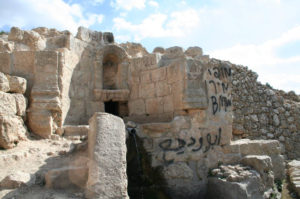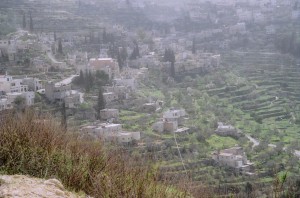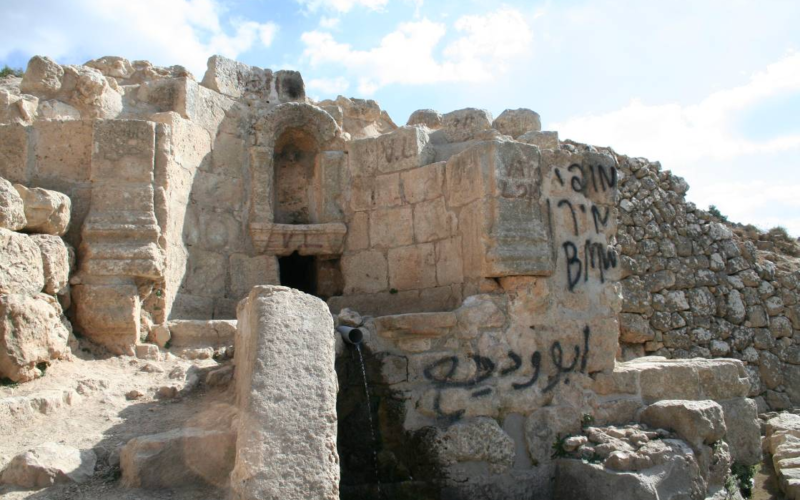History as Parody

Last week, on June 20th, United Nations Educational Scientific and Cultural Organization (UNESCO), one of the hotbeds of anti-Jewish activity, decided to rush a resolution designating the Arab village of Battir as a UNESCO Heritage Site. The explicit reason is to raise the village’s status so that Israel cannot run its security barrier through village lands.
The security barrier is designed to keep Palestinian terrorists out of populated Israeli areas. Basically, its goal is to stop suicide bombers from blowing themselves up on buses and pizzerias, and to stop kidnappers from taking our children. As I write, three Israeli students aged 16, 16 and 19, are missing after they were kidnapped on June 12th. But UNESCO doesn’t like the barrier. They see it as an infringement on Palestinian rights. They prefer to leave the area totally open, and then to wait till the terror happens. Once it does happen, the terror is never condemned by UNESCO. Rather, it’s the Israeli reaction to the terror that gets that Jew-hating institution going.
The irony is that the only reason that the Palestinian village of Battir has a claim to historical relevance is because it preserves the original Hebrew name of the place – Beitar. It’s at Beitar that Bar Kochva, the second-century Jewish rebel, made his last stand. It’s a kind of Jewish Alamo.

Judaea had been occupied by Roman forces. The Jews repeatedly revolted, usually led by messianic claimants. Invariably, these leaders – among them Judah the Gallilean and Jesus of Nazareth – ended up on a Roman cross. In the year 70 AD/CE, Jerusalem was destroyed. In the year 73 CE, the stronghold of Massada finally fell to Roman forces. The Jews of Masada committed mass suicide rather than be taken into slavery. The Romans crucified tens of thousands. According to first-century historian Josephus, they killed a million. They then exiled the native Judeans, taking their children for slaves and their women for prostitution. They left only the weak and the vulnerable. And yet, 62 years after the fall of Jerusalem, the last Jews of Judaea rose once again in revolt. This time they were led by a man who was called Bar Kochva – “The Son of the Star”. The Hebrew Bible had predicted that a “star will come out of Jacob” (Numbers 24:17). This was widely interpreted as a reference to the Messiah. It’s because of this that the followers of Jesus talked about “the Star of Bethlehem”, and it’s because of this that Simon ben Kosiba was called “Bar Kochva”. Basically, this was a title for a Messiah. And Bar Kochva did not disappoint. For three years (132 CE – 135 CE) he inflicted defeats on the Romans and held the greatest military power on earth at bay.
Archaeologically, the Bar Kochva fighters have left a labyrinth of underground tunnels. Here the fighters lived and loved, and ultimately died. They hid below ground, and they surfaced for air and battle. One second they were there, the next second they were gone. The Romans didn’t know what hit them. The tunnels are monuments to the longest liberation struggle in history, namely the Jewish struggle for the land of Israel. Remarkably, even some letters that Bar Kochva wrote have been found intact. Among his many military concerns, he takes time out to make sure he has the necessary ingredients for the Lulav, the bundle of leaves and citron that Jews still wave during the Feast of Tabernacles.
Bar Kochva made his last stand at Beitar. The fall of this stronghold in 135 CE marked the end of Jewish independence for 2000 years. Today, many fans of Beitar soccer clubs around Israel are not aware of the name’s origin. But UNESCO knows. That’s why they designated the Arab village of Battir as a Historical Heritage Site. In the heart of the village is what the locals call Khirbet el-Yahud (Arabic, meaning “The Ruin of the Jews”). These are the remnants of Bar Kochva’s last stand. What a joke – a parody of history – that a symbol of Jewish resistance should be used to beat up on Israel with a view to preventing a security barrier designed to prevent another Beitar.

